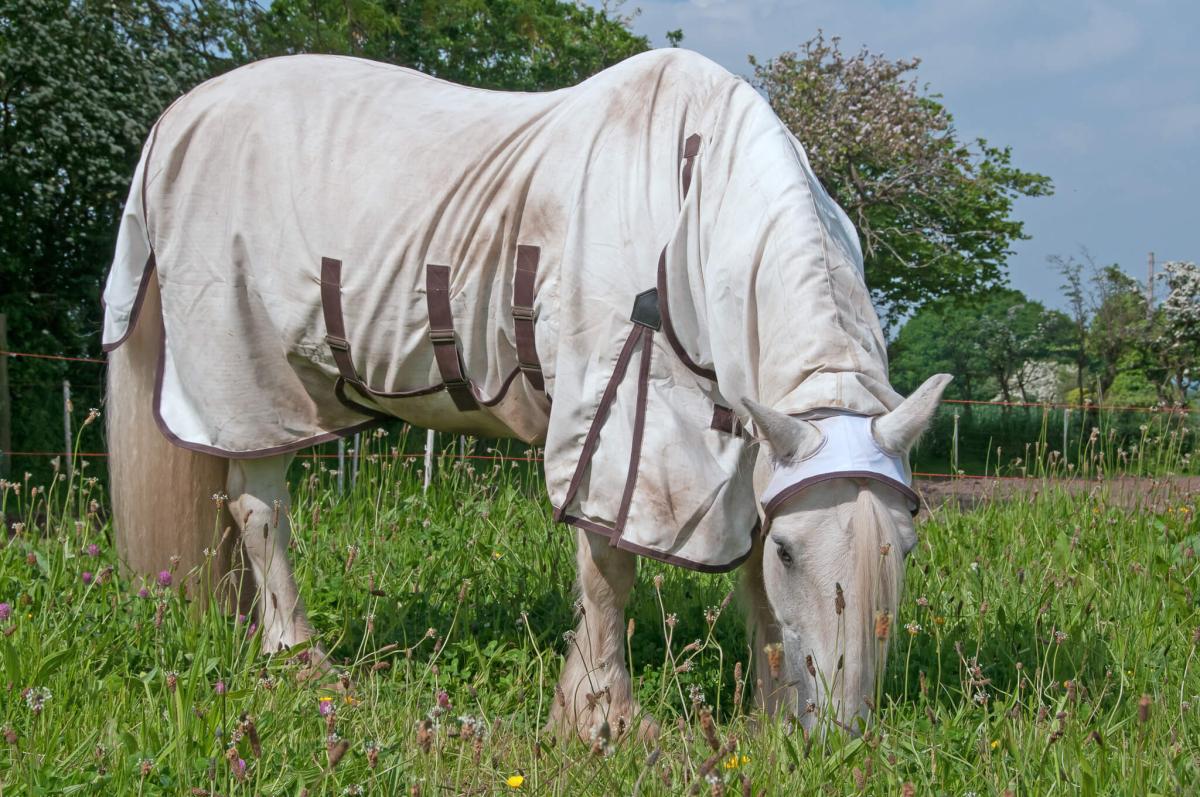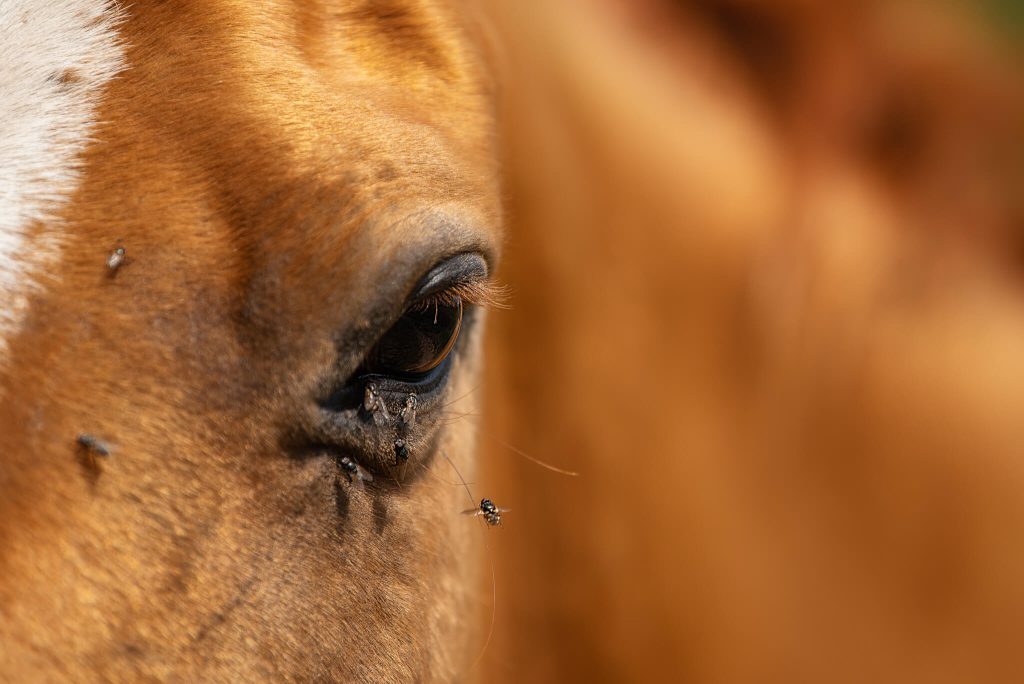
Sweet itch is one of the most common and frustrating skin conditions affecting horses, particularly during the warmer months. It can severely affect a horse’s comfort, performance, and appearance. In this post, we’ll delve into what sweet itch is, what causes it, how to recognise it, and most importantly, how to manage and prevent it effectively.
What is sweet itch in horses?
Sweet itch, also known as summer seasonal recurrent dermatitis (SSRD), is a chronic allergic skin reaction in horses. It’s caused by an allergic response to the saliva of biting midges, primarily of the Culicoides species. These insects are most active from spring through autumn, making sweet itch a seasonal problem for many equines. When these midges feed on a horse’s blood, they inject saliva into the skin, which contains proteins that some horses are highly allergic to. This results in an intense itch and inflammatory response.
Key risk factors include:
- Genetics: Some breeds are more prone to sweet itch.
- Geography and environment: Areas with standing water or humid conditions attract more midges.
- Age and exposure: Horses not exposed to midges at a young age may develop more severe reactions later.

Symptoms of sweet itch
Veterinarians typically diagnose sweet itch based on clinical signs and seasonal patterns. There is no definitive test, but skin scrapings may be used to rule out other causes such as lice or fungal infections. The signs of sweet itch are usually very distinctive and include:
- Intense itching, especially around the mane, tail, and belly
- Hair loss and bald patches from excessive rubbing
- Thickened, scaly, or broken skin
- Oozing sores or crusty lesions
- Behavioural signs, such as restlessness or irritability
- In severe cases, the skin can become infected, leading to further complications.
1. Preparing for fly season
In the UK, midges start emerging as early as March, so early intervention is essential. Begin sweet itch management by:
- Rugging up in early spring before the first midge hatch
- Starting supplements (e.g. oils or immune support) by late February or early March
- Booking a veterinary consultation if your horse had severe symptoms the previous year
2. Smart Turnout choices
Midges favour damp, sheltered areas, common across the UK. Reduce exposure by:
- Avoiding turnout near streams, ponds, boggy fields, or wooded shelterbelts
- Using windy, open fields where midges are less likely to settle
- Rotating grazing areas and draining wet spots where possible
3. Stable smarts: midge-proofing indoors
UK midges are most active at dawn and dusk, so:
- Stable horses during peak hours, especially in high-risk areas
- Spray entrances and bedding areas with insecticidal sprays approved for equine environments
- Use fans to increase airflow in stables – midges hate wind
4. Sweet itch rugs: A UK essential
A high-quality sweet itch rug is non-negotiable. In the UK, you'll need:
- Full coverage: ears, mane, belly, tail – even a face mask if necessary
- Durable, breathable fabrics suitable for the UK’s rainy and humid weather
- Good fit to avoid rubbing and slipping when wet
StowAg tip: Keep a spare rug for wet days so you always have a dry one ready.
5. Repellents and barrier products
In the UK, use midge-repelling products, such as fly sprays, consistently. Look for:
- Ingredients like DEET, permethrin, citronella, or lavender oil
- Barrier creams on sensitive areas (tail base, ears, underbelly)
- Neem oil or aloe vera gels to soothe inflammation and deter insects
StowAg tip: Reapply after heavy rain or sweating – typical in our unpredictable British summers!
6. Feed and supplements for skin health
UK forage can lack essential oils, so boost your horse’s diet with:
- Linseed oil or omega-3-rich supplements
- Garlic granules to help with insect deterrence
Sweet itch can be a distressing condition for both horses and their owners, but with awareness, timely intervention, and consistent management, its impact can be significantly reduced. Understanding the causes, recognising the symptoms early, and taking preventative measures, such as using fly rugs, repellents, and environmental control are key to keeping horses comfortable and healthy throughout the midge season. Whether
